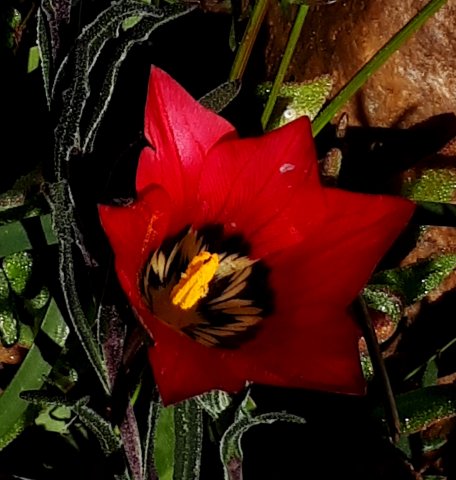Romulea pudica

Author: Ivan Lätti
Photographer: Jack Lätti
Romulea pudica, in Afrikaans commonly known as the kleinsatynblom (small satin flower) and previously as R. amoena, is a stemless geophyte reaching heights around 10 cm. Annual leaves and flowers are produced from the perennial, bell-shaped corm.
The deep, rose-pink, carmine or red flowers have black blotches and stripes arranged in a star-shape in the yellow-cream to white perianth cup. The brightly coloured tepal tips are acutely pointed, angled up or spreading and recurving. Flowers become about 3 cm in diameter. The specific name, pudica, means modest or chaste; its relevance may relate to size if there is any. Flowering happens in August.
The species has a small geographic distribution on the Bokkeveld Plateau near the border between the Northern Cape and the Western Cape.
The habitat is renosterveld and dry fynbos where the plants grow in stony, red clay soils derived from Dwyka tillite and dolerite, or on sandy soils derived from sandstone. The species is considered to be vulnerable in its habitat early in the twenty first century, due to rooibos tea and other farming enterprises (Manning and Goldblatt, 1997; iNaturalist; www.pacificbulbsociety.org; http://redlist.sanbi.org).

